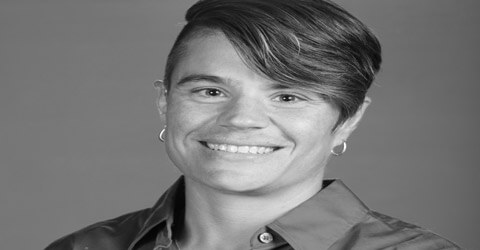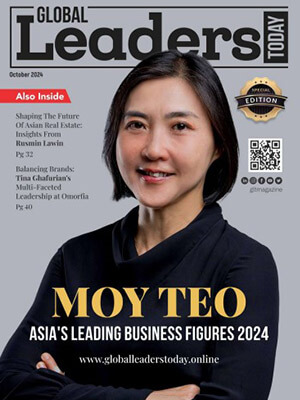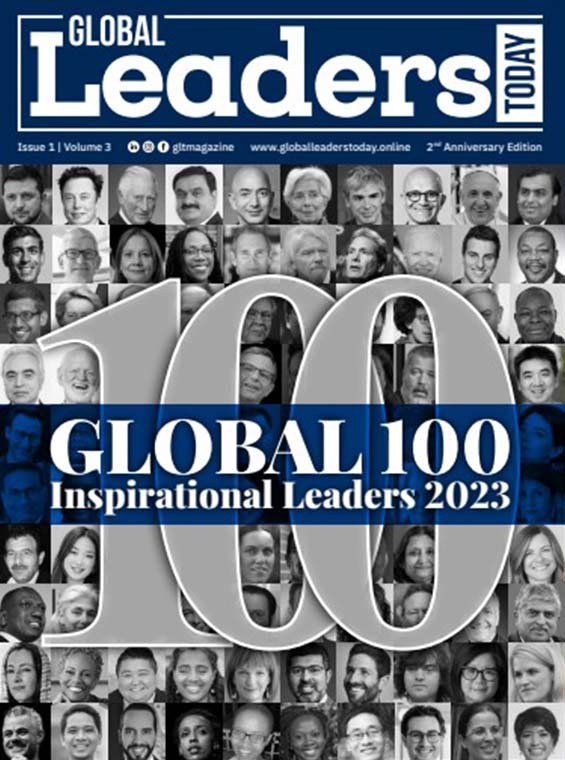Elise Roy is a deaf human-centred designer, former lawyer, and motivational speaker who works in the vanguard of the disruptive innovation movement. She is the Founder of an Inclusive Design Firm whose clients include the National Science Foundation and the Organisation for Economic Co-operation and Development. Her TEDx talk, ‘When we Design for Disability, We All Benefit,’ had over 1 million views in less than three months after headlining TED.com.
Elise Roy started losing her hearing abilities at an early age and has been deaf from the age of ten. In school, she learned how to teach herself from books with grave difficulty. She obtained her undergraduate degree from Brown University, where she first found her passion for advocating against social injustice.
While in university, she began to see herself as an advocate for differently-abled people. During her freshman year, the university tried to eliminate real-time captioning, which can be best explained as a cross between a courtroom stenographer and closed captions that you see on television that enabled her to hear and participate in classroom discussions for the first time. To combat this grave injustice, Elise organized a group with other deaf students and held meetings with several deans; she ultimately secured the real-time captioning for the remainder of her time at Brown.
After university, Elise went to law school at Northeastern University. While there, Elise became actively involved in lesbian and gay rights. She also acted as a fellow in Washington, D.C., for the Human Rights Campaign. Elise was in Law School when she began working on the International Disability Rights Treaty at the United Nations. It became the first human rights treaty to be passed at the United Nations in the 21st century and was ratified in 2007 with over 155 countries becoming signatories. After the treaty was signed in 2007, she was given the task to travel the world to see it put into action. Her work took her to Africa, Southeast Asia and the Gulf region.
It was during these travels that she faced tremendous challenges. It wasn’t related to her hearing loss or the causes she needed to fight for; it was about her direction in life. “I was in Zambia, and I learned that the life expectancy there was only 32,” she explained. “That put things in perspective for me. I realized that life was too short not to do something you love so I started the transition to becoming an artist.”
So once Elise got back in 2008, she began pursuing creative work and assisted with advertising for the democratic election campaigns. She worked her way up and eventually became the Marketing Manager for a small company in Baltimore, focusing on graphic design. However, her love for advocating for social injustice did not dissipate. In 2011, Elise merged both her passions, her love of art and advocacy and became part of the inaugural class of MICA’s M.A. in Social Design program.
“It was definitely difficult transitioning to the art realm. There were a lot of people who discouraged me from doing it, saying why not just make it a hobby? I knew it was a big leap, but I wanted it to be my real job.”
Elise found her passion in fabrication design through the use of repurposed objects—a fondness she discovered when she was renovating her family’s bathroom on an old tobacco farm. Elise said, “I never realized many power tools alert the right or wrong use by emitting different pitches, which made for a learning curve as someone who has a profound hearing loss.” She continued, “When you are welding, you have to wear a helmet that essentially blackens out everything but the flame so it’s impossible for me to follow along if the instructor talks. Also, a sound indicates the weld has started. I’ve had more than my share of getting my torch stuck to the metal because I didn’t hear this and react quickly enough!”
This experience gave her a new direction, and she focused her thesis on researching the barriers for individuals with hearing loss in the design realm and fabrication technology. She spent an entire semester working closely with Ryan Hoover, the Director of a fabrication studio, researching various tools to identify what auditory information was emitted and brainstorming possible adaptations for the deaf user.
In 2016, Elise founded her company, Elise Roy & Associates, a social enterprise that helps organizations analyze problems from the vantage point of people with disabilities. The organization is based on the notion that we develop better solutions when we design for extremes than when we design for the norm.
“A couple years ago I was telling people about human centered design, they had no idea what I was talking about,” Elise says. “But now they’re starting to recognize the value it provides businesses and starting to see how they can create more targeted responsive solutions.”
Big Data plays a vital role in creating more customer-centric solutions. It allows organizations to understand better how to react to the human experience and build more personalized and customized experiences and identify patterns that otherwise might have been difficult to see.
Elise opines, “One of the biggest struggles with integrating the perspective of people with disabilities is that there are such a wide variety of disabilities– it can be challenging to design with each one in mind. Big Data can help overcome those challenges. There are already products in the market that benefit individuals with disabilities that use the power of Big Data and the Internet of Things.”
Elise continues, “For instance, there are companies developing doorbell home security solutions that alert users to motion and allow them to monitor the door remotely– an ideal solution for individuals with mobility problems. Innovations like this and others including the Roomba or self-driving cars not only make it easier for people with disabilities to live independently but are also products that the general population enjoy as well.”
In order to continue to bring innovations like these to the market, it will be essential that Big Data be paired with human-centred design methods.
Moving forward, Elise believes there needs to be a symbiosis between Big Data and the human aspect of design.
In conclusion, she says, “You don’t have to be a design thinker to insert the ideas. You are creative. You are a designer — everyone is. Let people like me help you. Let people with disabilities help you look sideways, and in the process, solve some of the greatest problems.”








